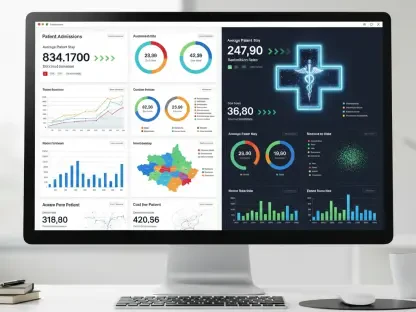Setting the Stage for Equity in Benefits
In 2025, as organizations strive to foster inclusive workplaces, a critical yet often overlooked opportunity emerges during the annual benefits selection period, known as open enrollment. Traditionally viewed as a routine administrative task, open enrollment holds untapped potential to address deep-seated disparities among employees. With a staggering 85% of employees valuing comprehensive wellness programs, the gap in actual utilization across socioeconomic lines reveals a pressing challenge. This period of benefits selection can serve as a pivotal moment to bridge inequities, ensuring that all employees, regardless of background, have access to vital resources.
The current state of the industry reflects a growing awareness of workplace equity, yet benefits systems frequently fail to align with this priority. Many employers design packages with good intentions but overlook structural barriers that hinder access for lower-income or less-educated workers. This report delves into how open enrollment can transform from a mere process into a strategic tool, driving fairness and enhancing employee well-being across diverse workforces.
Uncovering the Equity Gap in Benefits Access
Identifying Invisible Barriers
Structural inequities in benefits offerings often go unnoticed during open enrollment, creating significant obstacles for certain employee groups. Many organizations distribute dense guides or host brief sessions that assume a baseline level of familiarity with complex systems. For higher-paid employees, navigating these resources might be straightforward, but for those with limited time or education, the process becomes a daunting hurdle.
Economic barriers further exacerbate the issue, as even “free” benefits can carry hidden costs. Upfront payments for wellness programs, later reimbursed, or unpaid time off for preventive care visits disproportionately burden lower-income workers. Additionally, cultural mismatches in program design, such as wellness initiatives centered on costly fitness options, often alienate segments of the workforce, sending an unintended message of exclusion.
Complexity in communication compounds these challenges, with jargon-heavy materials tailored to a specific demographic. Benefits information often assumes a college-level understanding, leaving many employees confused or disengaged. Addressing these invisible barriers requires a deliberate redesign of how benefits are presented and accessed during this critical window.
Impact of Inequitable Access
Data highlights a stark disparity in benefits utilization, with higher-income employees far more likely to engage in preventive care compared to their lower-earning counterparts. Studies indicate that employees without college degrees participate in wellness programs at significantly lower rates, even when coverage is fully provided. This divide creates a two-tiered system where those most in need of support are least likely to receive it.
The consequences of such inequitable access ripple through organizations, affecting employee well-being and morale. Workers who miss out on essential health resources face increased stress and health risks, which can lead to absenteeism or disengagement. This fragmentation undermines organizational cohesion, as disparities in benefits access foster a sense of unfairness among staff.
Beyond individual impact, the broader implications for companies are clear. A workforce divided by access to care struggles to operate as a unified team, potentially harming productivity and culture. Tackling these disparities during open enrollment is not just an ethical imperative but a practical necessity for sustainable growth.
Strategies for Equitable Open Enrollment
Defaulting to Equity in Benefits Design
One powerful approach to leveling the playing field involves setting equitable defaults in benefits packages. By automatically enrolling employees in high-value, low-barrier options such as telemedicine services or mental health support platforms, organizations can boost participation among underserved groups. Easy opt-out mechanisms ensure flexibility while prioritizing access for those who might otherwise miss out.
Evidence demonstrates that default settings heavily influence behavior during benefits selection. When comprehensive wellness coverage becomes the standard choice, participation rates among traditionally marginalized employees rise noticeably. This strategy shifts the burden from employees to employers, ensuring that support reaches a wider audience without requiring extra effort from those already stretched thin.
Incorporating accessible benefits as defaults also sends a message of inclusion. Programs like virtual health consultations or basic fitness resources cater to diverse needs, removing initial hurdles that deter engagement. This proactive design can redefine open enrollment as a moment of empowerment rather than exclusion.
Eliminating Financial Hurdles
Financial constraints remain a significant barrier to benefits access, but innovative solutions can dismantle these obstacles. Direct-pay arrangements, where employers cover upfront costs for wellness programs, eliminate the need for employees to front expenses. This approach ensures immediate access without the burden of delayed reimbursements.
Pre-tax health savings accounts dedicated to wellness expenses offer another layer of support, providing employees with instant purchasing power for health needs. Additionally, emergency stipends for unexpected costs acknowledge the real-world challenges many face, such as balancing healthcare with daily expenses. These measures can transform how employees experience benefits selection.
By prioritizing financial accessibility, companies address a root cause of inequity during open enrollment. Such initiatives not only enhance participation but also build trust, showing a commitment to supporting employees in tangible ways. This focus on affordability can redefine the benefits landscape for those most in need.
Streamlining and Personalizing Communication
Effective communication lies at the heart of equitable benefits access, yet many organizations rely on generic messaging that fails to resonate. Tailored information sessions offered in multiple languages can bridge cultural and linguistic gaps, ensuring all employees grasp their options. This targeted approach makes the process more inclusive and relevant.
Partnering with employee resource groups to facilitate peer-to-peer education further enhances understanding. These collaborations allow for culturally sensitive discussions, addressing unique concerns within diverse communities. Additionally, decision tools or guides that account for varied life circumstances can help employees navigate choices with confidence.
Simplifying benefits materials by eliminating jargon and reducing complexity is equally critical. Clear, concise resources empower employees to make informed decisions without feeling overwhelmed. By prioritizing accessible communication, open enrollment can become a unifying experience rather than a divisive one.
The Business Case for Equitable Benefits
Investing in equitable open enrollment practices yields substantial returns for organizations beyond moral considerations. Research reveals that 83% of employees would consider leaving a company lacking a focus on well-being, underscoring the link between benefits access and retention. Equitable systems foster loyalty, reducing turnover costs in a competitive labor market.
Moreover, increased utilization of preventive care across all employee demographics can drive down overall healthcare expenses. When benefits access becomes more balanced, companies often observe fewer emergency claims and better health outcomes, translating to financial savings. Industry studies consistently affirm this correlation, highlighting a clear economic incentive.
Employee satisfaction also sees a notable boost when wellness programs are inclusive and accessible. Workers who engage with these resources report higher job contentment, contributing to a positive workplace culture. This alignment of equity with business outcomes positions open enrollment as a strategic priority for forward-thinking leaders.
Navigating Challenges in Transforming Open Enrollment
Redesigning open enrollment for equity is not without obstacles, as resistance to change often surfaces within organizations. Stakeholders accustomed to traditional systems may question the need for an overhaul, viewing it as an unnecessary disruption. Overcoming this mindset requires clear communication about the long-term benefits of inclusive practices.
Budget constraints pose another significant hurdle, as revamping benefits systems demands investment. Incremental implementation offers a practical solution, allowing companies to phase in changes without overwhelming financial resources. Starting with pilot programs or targeted initiatives can demonstrate value and build momentum for broader reforms.
The complexity of restructuring benefits also presents a challenge, given the intricacies of existing frameworks. Leveraging data to identify utilization gaps and justify investments helps navigate this terrain. By aligning transformation efforts with measurable outcomes, organizations can address logistical barriers while maintaining focus on equity goals.
Future Outlook: Open Enrollment as a Strategic Priority
As workplace equity gains prominence, open enrollment stands poised to evolve into a cornerstone of organizational strategy. A sustained commitment to data-driven improvements can refine benefits systems, ensuring they adapt to changing employee needs. Regular analysis of participation trends will be key to closing persistent gaps over time.
Emerging technologies, such as personalized benefits platforms, promise to further revolutionize this space. These tools can tailor offerings to individual circumstances, enhancing relevance and engagement. Coupled with employee feedback loops, such innovations enable continuous refinement of open enrollment processes.
Looking ahead, the integration of these trends signals a shift toward proactive equity in benefits design. Organizations that prioritize this evolution will likely lead the industry in fostering inclusive environments. Open enrollment, once a mere formality, holds the potential to become a defining element of workplace fairness.
Reflecting on the Path Forward
Looking back, the exploration of open enrollment revealed its profound capacity to address workplace inequities and elevate employee well-being. The disparities uncovered in benefits access underscored a critical need for change, while actionable strategies provided a roadmap for transformation. The business case cemented the value of these efforts, linking equity to tangible organizational gains.
Moving forward, HR leaders are encouraged to take decisive steps, beginning with rigorous data analysis to pinpoint utilization gaps. Simplifying processes emerges as a vital tactic, ensuring that benefits selection no longer poses an undue burden. Engaging frontline employees in redesign efforts stands out as a powerful way to ground reforms in real-world needs.
Ultimately, the journey toward equitable open enrollment demands intention and investment, but the potential rewards justify the effort. Companies that embrace this opportunity position themselves to not only enhance lives but also strengthen their standing in a competitive landscape. The call to action remains clear: prioritize equity in benefits now to build a more resilient future.









